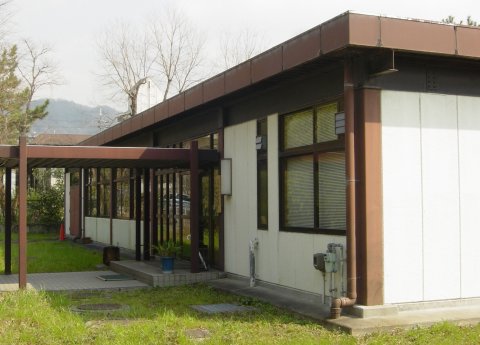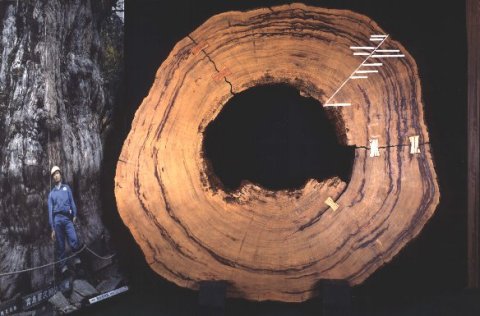
 Facilities of Cooperative Study Program: Facilities of Cooperative Study Program:
Xylarium
Overview
This Xylarium was founded in 1980, taking advantage of the registration of Index Xylariorum, International Wood Collections of the World, the code address of which is KYOw in 1978.
The collection of wood samples was started in 1944 when The Wood Research Institute was established and totals now about 15 015 samples which contain 3 617 species, 1 131 genera, 172 families.
There also are 9 563 microscope slides of the specimens.
Most samples are botanically authenticated, some parts of which correspond to herbarium speciments.
There also are old wood samples which are important to the archaeology, geology or paleontology.
Collecting and exchanging of wood samples are still continuing to the present day.

Wood specimens
Wood specimens are collected from not only Japan also Europe, Africa, Asia, Oceania, North America and South America.

Microscope slides
Microscope slides of wood specimens are prepared, being classified by taxa. Single preparation contains three thin sections of each specimen, those are transverse, radial and tangential sections.

Precious Wood Collections
YAKUSUGI (Cryptomeria japonica (L. f.) D. Don) 180 cm in diameter. The year of felling was estimated as 1935 by dendrochronologcal methods. The tree rings can be traced back to 1192 A. D.

Ancient Wooden Materials
What kinds of tree have been used for human life in the past? The understanding of historical changes of their wood utilization may give us the wisdom of life in future. The identification of buried woods reveals palaeovegetation and might give us knowledge of the relationship between nature and human beings.

A part of the central column (Chamaecyparis obtusa (Siebold et Zucc.) Endl.) of five-storied pagoda in Horyuji temple, Nara Pref. The Horyuji temple is the oldest wooden building in the world, which is registered as a World Heritage of UNESCO in 1993. This specimen shows 351 of annual rings and more thean 455 years of tree ages equivalent to Yayoi and Asuka period (A. D. 241–591).
Identification of Wooden Remains
The first professor, Dr. Fumihiko Onaka is the first researcher in Japan who identified excavated wood. His works still constitute invaluable source materials which resulted in the complication of “Index of wooden articles excavated from the relics in Japan” (Ken Shimaji and Takao Itoh ed. 1988). Our laboratory contributes to the joint research of ruins in China and Egypt.

Many wooden articles, excavated from the Akanoiwan Site at the bottom of the Lake Biwa, Shiga Pref., were identified with Cryptomeria japonica (L. f.) D. Don (Japanese Cedar). What does this mean?

Photomicrograph of Cryptomeria japonica (L. f.) D. Don (Japanese Cedar), the Akanoiwan Site.
Large-sized wood collection
Many wood samples collected from University Forest in Ashuu and Kamigamo Experimental Forest.

Return to Top page | Department of Collaborative Research Programs.
|

